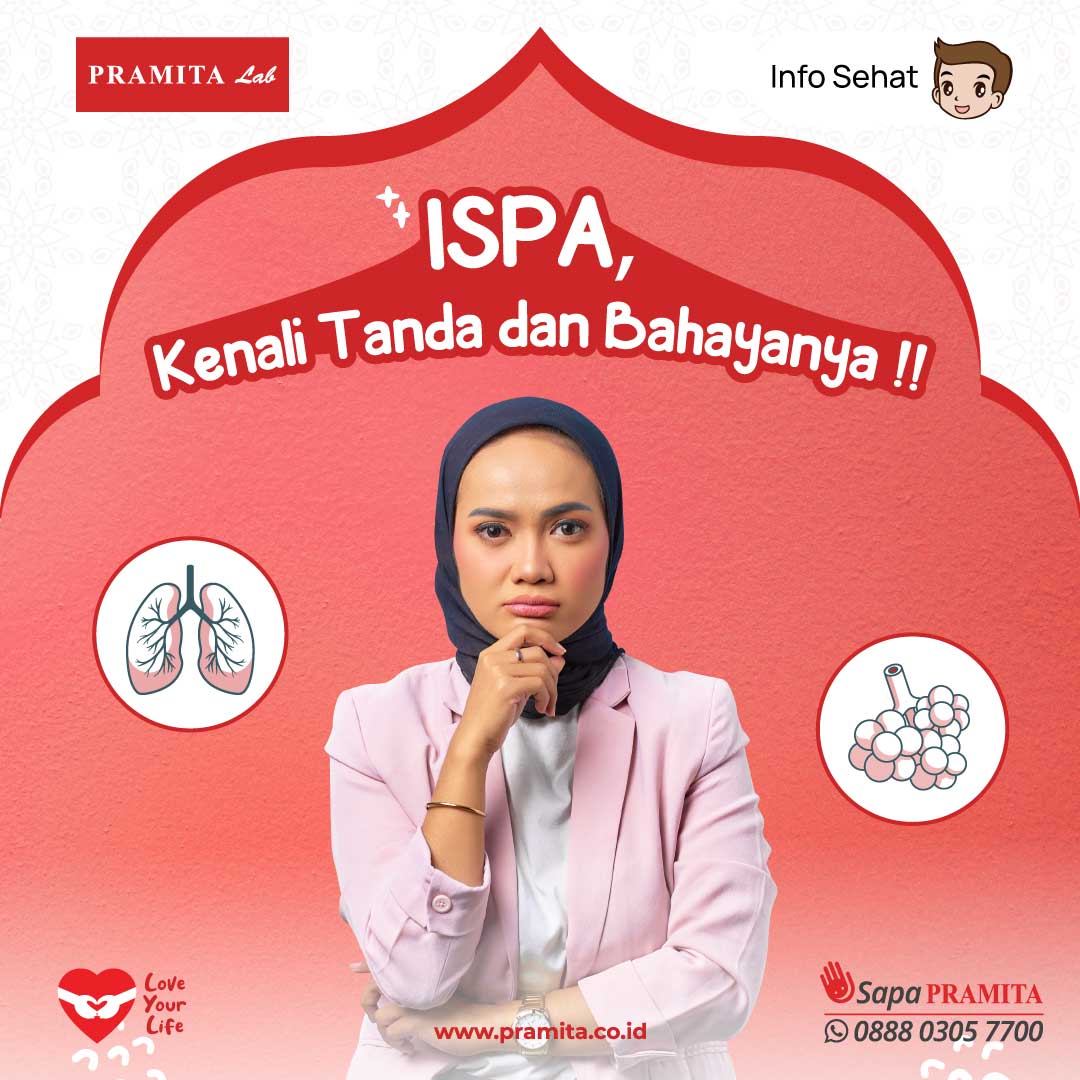Healthy Inspirations

ARI (Acute Respiratory Infection), Symptomps and Dangers
Wed, 29 Mar 2023Acute Respiratory Tract Infection (ARTI) is a broad term used to describe a range of infectious diseases that affect the respiratory system. It is true that Ari can affect anyone, but certain groups of people may be more susceptible to infections due to a weakened immune system, such as young children, the elderly, and people with underlying health conditions
It is true that Ari can affect anyone, but certain groups of people may be more susceptible to infections due to a weakened immune system, such as young children, the elderly, and people with underlying health conditions.
Ari can be caused by a variety of pathogens, including viruses that affect the upper respiratory tract and can be easily spread from one person to others.
WHO (2008) described that the symptoms of ARI can vary depending on the specific infection and the severity of the illness. Common symptoms of ARI include fever, cough, sore throat, nasal congestion, and body aches. Some people may also experience fatigue, headache, and shortness of breath. In severe cases, ARI can lead to complications such as pneumonia, which can cause difficulty breathing and chest pain. Infants and young children may experience additional symptoms, such as bronchiolitis, which is inflammation of the small airways in the lungs, and croup, which is inflammation of the larynx and trachea. These conditions can cause wheezing, barking cough, and difficulty breathing.
Acute respiratory infections (ARIs) can be caused by a variety of bacterial and viral pathogens. Some of the bacterial causative agents of ARIs include streptococci, staphylococci, Pneumococci, Haemophilus influenzae, Bordetella and Corynebacterium. Some of the viral causative agents of ARIs include myxovirus, adenovirus, coronavirus, Picornavirus, Myxoplasma, Herpesvirus and others
The three general risk factors for ARI (Acute Respiratory Infection) are as follows:
- Environmental factors: Indoor air pollution, home ventilation, and home occupancy density are some of the environmental factors that can increase the risk of ARI.
- Individual factors of the child: Child's age, birth weight, nutritional status, vitamin A, and immunization status are some of the individual factors that can increase the risk of ARI.
- Behavioral factors: The practice of handling ARI in both families done by the mother or other family members can also affect the risk of ARI in infants and toddlers. The family is the smallest unit of people who gather and live in a household and can influence each other's health and behaviors.
It's important to address these risk factors to prevent and control ARI, which is a leading cause of morbidity and mortality in young children worldwide.
Here are some treatments that can be done for ARI patients:
- Home treatments:
- Applying Compresses: Warm or cold compresses can help relieve symptoms like fever, headaches, and congestion.
- Hydration: It's important to encourage the patient to drink plenty of fluids to stay hydrated and help thin out mucus.
- Bed Rest: Adequate rest is necessary to allow the body to recover from the infection.
- Clearing the airway: Using saline drops or sprays and a bulb syringe can help clear out nasal congestion.
As for feeding, it's important to make sure the patient is receiving adequate nutrition during and after the illness. If the patient is vomiting, it's best to give small, frequent meals and avoid rich or greasy foods until they can tolerate them. It's important to seek medical attention if the patient is unable to keep food or fluids down or shows signs of dehydration.
Treatment of respiratory illnesses according to MOH RI-2010 guidelines.
- Severe pneumonia: Patients who have been hospitalized for severe pneumonia are given antibiotics through an infusion line and provided with oxygen therapy.
- Pneumonia: Patients with pneumonia who are not hospitalized can be given antibiotic drugs by mouth.
- Other respiratory illnesses: For patients who do not have pneumonia but have symptoms like coughing, traditional cough medicines or other cough medicines that do not contain harmful substances can be used. For fever, paracetamol can be given. If a patient has symptoms like pus spots in the throat and enlarged lymph nodes, it may be a sign of streptococcal pharyngitis (inflammation of the throat caused by streptococcus bacteria), and antibiotics should be given for 10 days.
It is important to note that the guidelines for the treatment of respiratory illnesses may vary depending on the severity of the illness, the age of the patient, and other factors. It is always best to consult a healthcare professional for proper diagnosis and treatment.
Reference Library:
- WHO. Prevention and control of acute respiratory infections (ARI) which
tend to be epidemics and pandemics in health care facilities. 2007. WHO Interim guidelines.
- Achamdi. The main killer. 2012. Http://www.ppmplp.depkes.go.id
- MOH RI. Risks Of Indonesia In 2010. London: Routledge, 2010.
- MOH RI. Guidelines For The Eradication Of Acute Respiratory Infectious Diseases.
2002 . Jakarta
Author: Noerlia., dr (Doctor of Medical Services Pramita Clinical Laboratory Branch Jl. Raya Ragunan No. P-3 South Jakarta)

